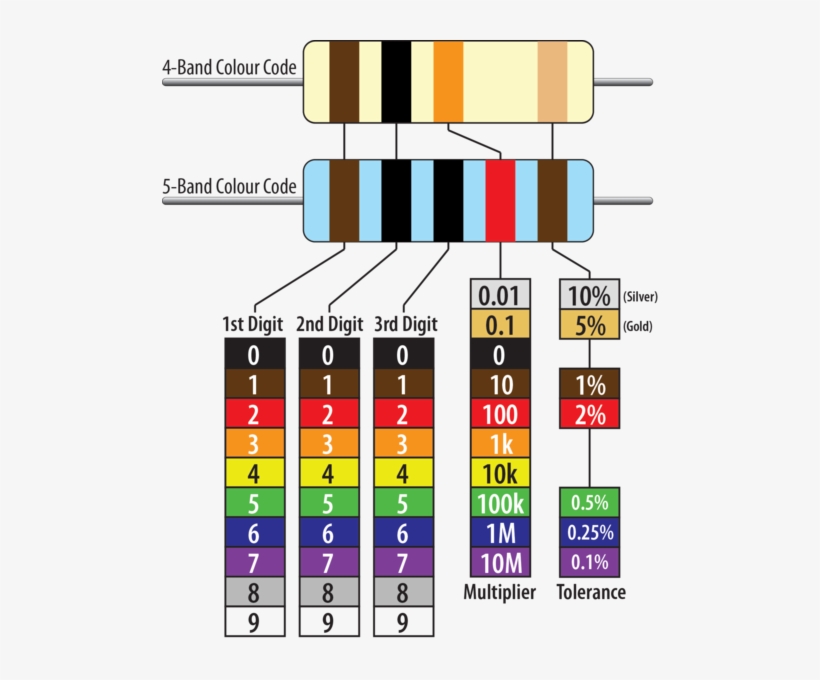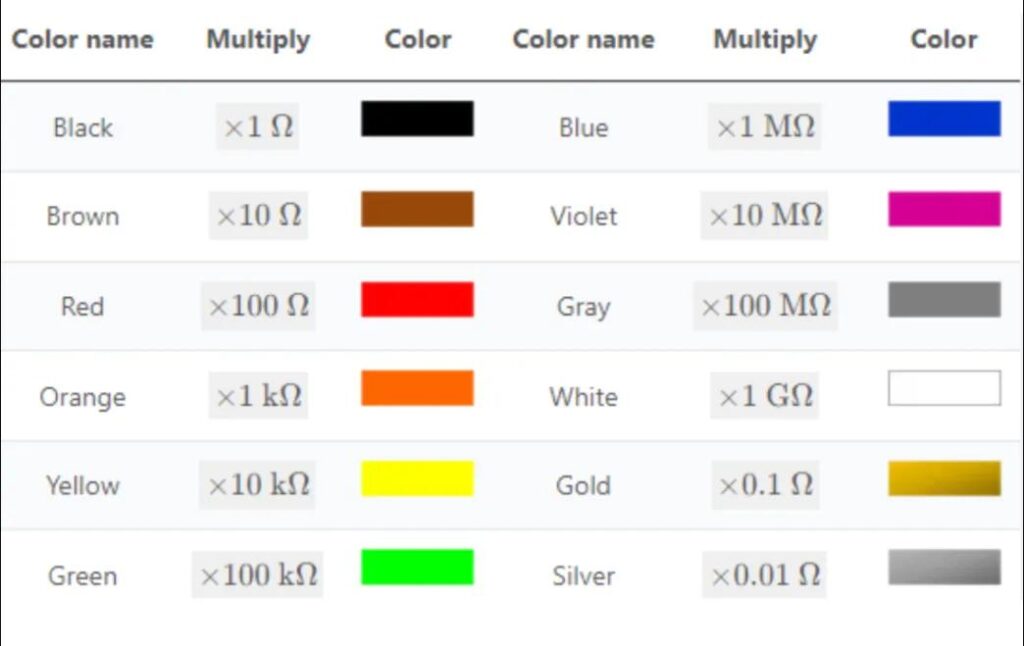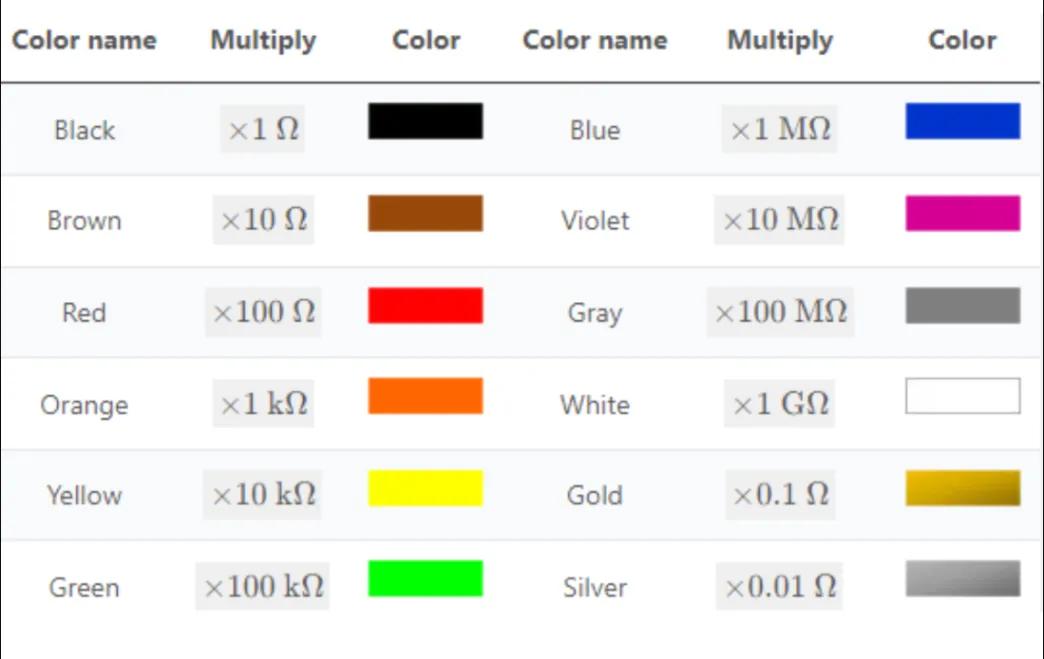Introduction:
Are you struggling to decode the colorful bands on a 10k resistor? This guide will explain everything you need to know about the 10k resistor color code, how to read it accurately, and where this essential component is used in electronics. Whether you’re a beginner or an experienced engineer, this article covers the fundamentals, practical applications, and FAQs to help you master resistor identification.
What is a 10k Resistor?
A 10k ohm resistor is an electrical component with a resistance value of 10 kilohms (10kΩ). It is composed of materials specifically designed for efficient heat dissipation (typically a mixture of metal alloys or carbon compounds) and serves to regulate current flow. This component is crucial for controlling signal levels, voltage division, and protecting sensitive components from excessive current, making it widely used in various electronic and electrical systems. The color-coded bands on the resistor are an important tool for quickly identifying the resistance value and tolerance of a 10K resistor.
Revealing the color bands of 10k resistors
The color bands on a resistor are key to determining its resistance value and tolerance. Resistors typically have four (standard precision color bands) or five bands (precision color bands), each with a different function.
- Four-band resistor
A four-band resistor has four color bands: brown, black, orange, and gold.
The first two bands, brown and black, represent 10 (the first brown band represents 1, the second black band represents 0, combined to form 10; here, 10 is the significant digit, not the final resistance value).
The third orange band represents the multiplier “×10³”, resulting in a resistance value of 10,000 ohms.
The fourth gold band indicates a 5% tolerance, indicating the potential deviation of the resistor value, ensuring accuracy in various practical applications. In applications where precision is critical, even minor deviations can significantly affect the overall performance of electronic circuits.

- Five-band resistor
A five-band resistor has five color bands: brown, black, black, red, and brown.
The first three color bands—brown, black, and black—indicate 100 (the first brown band represents 1, the second black band represents 0, and the third black band represents 0. A five-band resistor has one more significant digit than the standard four-band resistor, resulting in higher precision.)
The fourth band, red, indicates the multiplier, representing “×10²”, resulting in a resistance of 10,000 ohms.
The fifth band, brown, indicates a tolerance of 1%. This high precision makes five-band resistors ideal for use in complex circuits.
Applications of 10k Ohm Resistors
Due to their unique characteristics, 10k ohm resistors play an indispensable role in many fields, such as:
- Timer Circuits
Multivibrators and non-stable multivibrators often use resistors and capacitors. The timing characteristics of such circuits can be adjusted using 10k ohm resistors.
- Temperature sensors
Thermometers, as temperature-sensitive resistors, require resistors in series to connect to microcontrollers and analog-to-digital converters (ADCs), with 10k ohm resistors typically used.
- Filter circuits
Passive filter circuits are constructed using resistors and capacitors. Depending on the circuit configuration, 10k-ohm resistors can be used as low-pass, high-pass, band-pass, or band-reject filters.
- LED current limiting
To prevent LED damage, 10k-ohm resistors can be used in series to control the current when driving LEDs with a voltage source, thereby limiting the forward voltage and supply voltage within safe limits.
- Voltage divider
Circuits with voltage dividers are one of the most common applications. By connecting two resistors in series, a voltage divider can be constructed. By dividing the input voltage by the two resistors, the resistance ratio is determined. This method can be used to create a reference voltage, bias circuits, and to scale voltages for measurement.
How to Read Resistor Color Code?
The resistor color code system is an important invention dating back to the early 1920s. Today, we can easily determine the resistance value of a resistor by identifying the color bands on it.
When interpreting resistor color codes, the most common question is how to determine the starting point. We provide the following methods for you to try:
- Color band spacing
Most resistors have uneven color band spacing, typically forming specific grouping patterns.
The widest spacing is often found before the tolerance ring, so this wider gap should be placed on the left, and the values should be read from left to right.
- Tolerance Mark
Resistors typically have a tolerance rating of 5% or 10%. Gold represents 5%, while silver represents 10%. It is important to note that the color code of a resistor never starts with a metallic color (gold/silver). The tolerance ring is located on the right side of the resistor; confirm again that it should be read from left to right.
- Determining the starting end
Although the first ring is usually closest to the end of the resistor, this is not an absolute rule. If unsure, cross-verify using other clues.
The following are the steps for reading resistor color codes:
- Each color corresponds to a specific number, collectively forming the resistance value identifier
- Color coding is applied to the first two or three color bands on the left. After these initial color bands, we come to the multiplier color band, which is distinguished by the following color coding:

10k resistor multi-band color code
- By multiplying the numerical value corresponding to the previous color ring by the multiplier corresponding to each color, you can obtain the numerical value corresponding to the previous color ring multiplied by 10 to the power of that multiplier. The prefixes “kilo”,”mega” and “giga” are used to indicate these multipliers. Alternatively, smaller units can be expressed using scientific notation, such as 10⁹ (gigohum). All resistor types have a tolerance band, which appears on the last color band (4, 5, and 6). Typically, this indicates the normal distribution of the component’s resistance, expressed as a percentage.
FAQS
- What color is a 10k resistor?
The color ring colors of 10k resistors vary depending on their tolerance (accuracy) and are commonly available in two combinations:
(1) Four-ring resistors with 5% tolerance, with the color ring sequence being: brown-black-orange-gold;
(2) Five-ring resistors with 1% tolerance, with the color ring sequence being: brown-black-black-red-brown.
- What is a 10k resistor equivalent to?
A 10k resistor (10,000 ohms) is equivalent to:
(1) Series and parallel combinations: two 20k resistors in parallel (20k∥20k = 10k), or ten 1k resistors in series (1k×10 = 10k).
(2) Voltage divider circuit: When combined with another 10k resistor, it forms a 1:2 voltage divider (e.g., converting 5V to 2.5V).
(3) Functional substitution: In non-precision circuits, approximate value resistors (e.g., 9.1k or 11k) can be used as temporary substitutes.
Recommended Reading:











